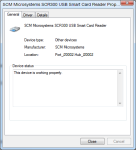Since the summer I’ve been all about interfacing with smart batteries. All the laptops I’ve had, I’ve deciphered the pinouts for. However, our college-supplied laptops, the Toshiba Tecra R840, has eluded me for over a year. The IT department didn’t allow me to obtain an old battery pack for disassembly (not like I was expecting them to 🙂 ), so instead I looked at disassembling the laptop to find out the interface. The reason I decided to take apart the laptop as opposed to the battery, is that the laptop is generally able to be taken apart and re-assembled without leaving permanent marks; batteries are often ultrasonically welded and can only be opened with brute force or a hot knife.

Laptop bottom cover removed and powered by battery
After removing many screws and popping the bottom of the laptop apart, I looked to the battery connector to find out the pinout.

Close-up of battery connector
The PCB had an unpopulated spot for some 3-terminal ESD protection diode, and this was a hint that these two pins were what I was looking for. I soldered some wires to the pins and a third ground wire, and attached them to a pin header. I used a logic analyzer to examine the signals (if any) that passed through the connector.

Logic analyzer trace of initial battery insertion
And I hit pay dirt, or so I thought. I was able to find out that there indeed was communication between the battery and the laptop. However, the fun ends there. Looking closely at the I2C transactions, I could see that the battery wasn’t speaking the normal SBS (Smart Battery System) protocol. Testing with my Texas Instruments EV2400 confirmed that this isn’t a smart battery. It appears that the battery likely only contains an EEPROM for some battery information storage but lacks any real means of gas gauging. That would probably explain why battery life is abysmal on these machines!

Toshiba battery not detected with smart battery hardware/software
I was able to mostly figure out the pinout for the battery, but what has yet to be seen, is which pins provide power to the EEPROM chip, as it seems that it is not powered internally.

Currently known battery pinout
Sometime later I’ll have to delve further into the contents of the EEPROM, or try and obtain one of these batteries for disassembly. We’ll just have to see.
 The connections are made by taking the blades of an ATO or ATC (regular size) car fuse, soldering them to some 16-gauge speaker wire, then soldering the other end to an inexpensive DC lighter socket.
The connections are made by taking the blades of an ATO or ATC (regular size) car fuse, soldering them to some 16-gauge speaker wire, then soldering the other end to an inexpensive DC lighter socket. This setup is only good for roughly 5 amps (the overcurrent protection on this battery is set to 6 amps) and the voltage near the end of discharge can be too low for certain devices; power inverters will stop at about 10 to 11 volts which leaves a small amount of battery capacity unused.
This setup is only good for roughly 5 amps (the overcurrent protection on this battery is set to 6 amps) and the voltage near the end of discharge can be too low for certain devices; power inverters will stop at about 10 to 11 volts which leaves a small amount of battery capacity unused.






















